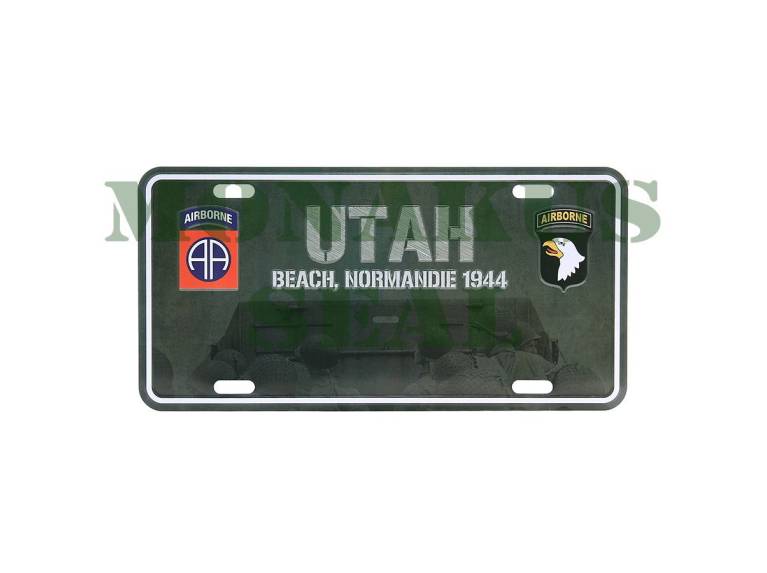1944 Utah Beach Normandie License Plate made of Aluminum. Dimensions 303mm x 151mm.
Utah, commonly known as Utah Beach, was the code name for one of the five sectors of the Allied invasion of German-occupied France in the Normandy landings on June 6, 1944 (D-Day), during World War II. World . The westernmost of the five code-named landing beaches in Normandy, Utah, is located on the Cotentin Peninsula, west of the mouths of the Douve and Vire rivers. Amphibious landings in Utah were carried out by United States Army troops, with shipping, mine sweeping, and a naval bombardment force provided by the United States Navy and Coast Guard, as well as elements of the British navies, Dutch and other allies.
The goal in Utah was to secure a beachhead on the Cotentin peninsula, the location of major port facilities in Cherbourg. The amphibious assault, mainly by the 4th. US Infantry Division And 70th Tank Battalion, was supported by air landings from the 82nd and 101st Airborne Division. The intention was to quickly seal the Cotentin peninsula, prevent the Germans from reinforcing Cherbourg, and capture the port as quickly as possible. Utah, along with Sword on the eastern flank, was added to the invasion plan in December 1943. These changes doubled the invasion front and required a one-month delay for additional landing craft and personnel to be assembled in England. The allied forces that attacked Utah engaged two battalions of the 919th Grenadier Regiment, part of the 709th Static Infantry Division. While improvements to the fortifications had been carried out under the leadership of Field Marshal Erwin Rommel as of October 1943, the troops assigned to defend the area were mostly ill-equipped non-German recruits.
D-Day in Utah began at 01:30 when the first of the airborne units arrived, tasked with securing the key crossroads at Sainte-Mère-Église and controlling the driveways through the flooded farmland behind Utah so that infantry may advance inland. While some airborne targets were quickly met, many paratroopers landed far from their drop zones and were unable to meet their targets on the first day. On the beach, infantry and tanks landed in four waves beginning at 6:30 a.m. and quickly secured the immediate area with minimal casualties. Meanwhile, the engineers went to work clearing the area of obstacles and mines, and additional waves of reinforcements continued to arrive. At the close of D-Day, the Allied forces had only captured about half of the planned area and the contingents of German defenders remained, but the beachhead was safe.

